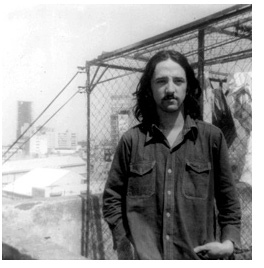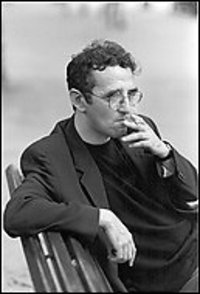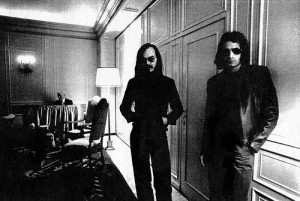We were saying?
Wow, look at the New York Times, today, on the complicated legacy of Roberto Bolano, here.
Money quote(s):
Few writers are more acclaimed right now than the Chilean novelist Roberto Bolaño, who died of an unspecified liver ailment in 2003, at the age of 50. His posthumous novel, 2666, appeared on many lists of the best books of 2008, and interest in him and his work has been further kindled by his growing reputation as a hard-living literary outlaw…At the same time, some of Mr. Bolaño’s friends in Mexico, where he lived for nearly a decade before finally settling down near Barcelona, Spain, are questioning another aspect of the life story he constructed for himself…Regarding Mr. Bolaño and drugs, numerous Latin American and European critics and bloggers have taken the side of his widow, accusing American critics and publishers of deliberately distorting the writer’s past to fit him into the familiar mold of the tortured artist.
This, as they say, is a propos. Where my previous post focused more on the ways in which critics (and fans) have their own reasons (sometime legitimate, often selfish) for propagating the romanticized image of the decadent artist, there is no question (as Marjorie pointed out) that some artists are very invested in their own mythologizing. I was more concerned with the idea of the posers who are probably not artists at all (i.e., the ones who will corner you at a party and talk, endlessly, about all the projects they’ll get around to working on, someday), but of course there are the ones, ranging from obscure (James Frey) to already established (Bolano) fabricating an entire autobiography based on a deliberate embellishment. Or, to put it more bluntly, a lie. And this could warrant considerable examination, but I think the bottom line is, it’s a mutually rewarding endeavor for writer and publisher/editor when this sham works. It creates the dangerous aura the writer can cultivate to generate interest (and sales) and it creates a buzz about the writer, which generates sales (and interest in future books). The blame game–so typically American–only commences when the author’s work (or bio) is definitively exposed as fiction (see: James Frey) and you have editors scrambling to cover their asses (or idiots like Oprah Winfrey who, personifying the prurient American reader who is taken hook line and sinker by the outrageous, over-the-top exploits of the bad-ass artist, shifts from huckster to soap-box admonisher overnight, just to save face). This is a tricky dance: some editors are genuinely duped, some are simply disingenuous, and find that their usually infallible bullshit detectors tend to malfunction at the first promise of a potential best-seller. The agents, editors and publishers who are shocked to discover that they were taken tend to protest too much.
But in the final analysis, despite how despicable and petty the business side of publishing is, once the silk curtain is pulled back, the fact that artists lie (or feel it’s a good business decision to lie) and publishers turn a blind eye says more about the collective audience who sits back and laps it up.
If you are going to create your own persona, at least do it transparently, and with some measure of self-deprecating humor. And, always, elan. Like Donald Fagen did with his immortal, tongue-in-cheek ode to aggrandizement, Deacon Blues. But then, he really was a rock star.
You call me a fool
You say it’s a crazy scheme
This one’s for real
I already bought the dream
So useless to ask me why
Throw a kiss and say goodbye
I’ll make it this time
I’m ready to cross that fine line
I’ll learn to work the saxaphone
I play just what I feel
Drink Scotch whiskey all night long
And die behind the wheel
They got a name for the winners in the world
And I want a name when I lose
They call Alabama the Crimson Tide
Call me Deacon Blues



